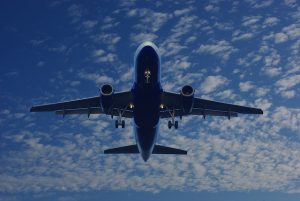
Unlike with cars and other land vehicles, most airplanes aren’t powered by a single engine. They typically feature multiple engines. The Boeing 737 and the Airbus A300, for instance, feature two engines. The Boeing 787 and the Airbus A380, on the other hand, feature four engines.
With multiple engines, airplanes require a numbering system. Airliners don’t just assign random numbers to their engines. There’s a universal numbering system that determines how airplane engines are numbered.
Why Airplane Engines Are Numbered
Airplane engines are numbered so that pilots can relay information about them. Without a numbering system, pilots wouldn’t be able to relay information about any single and specific engine. If one of the engines fails, pilots may struggle to tell air traffic controllers which engine has stopped working.
A numbering system eliminates any possible confusion. In the event of failure, pilots can tell air traffic controllers the specific engine number that has failed.
Airplane engines are also numbered for starting purposes. Pilots don’t start all of the engines at the same time. Rather, they start them sequentially one at a time. Normally, pilots will start engine three first, followed by engine four. Pilots will then start engine two and, lastly, engine one. Most pilots use this starting sequence, which involves the use of numbered engines.
The Basics of Engine Numbering and How It Works
Airplane engines are numbered beginning at one from the farthest left of the pilot’s point of view. In other words, the engine to the farthest left of the pilot is engine one. If it’s a four-engine airplane, the next closest engine will be engine two. And the two engines to the right of the pilot will be engines three and four, respectively.
It’s important to note that airplane engines are numbered based on the pilot’s point of view while he or she is seated and looking forward. If you are standing and facing the airplane, the engines would be numbered differently. But airplane engines are numbered based on the pilot’s point of view while he or she is seated and looking forward.
What About Single-Engine Airplanes?
Single-engine airplanes don’t need a numbering system because they are powered by a single engine.
Multi-engine airplanes, though, do require a numbering system. It allows pilots to relay information about the engines more easily. Rather than trying to explain which engine has failed or is otherwise suffering from a technical problem, pilots can say the engine number.



